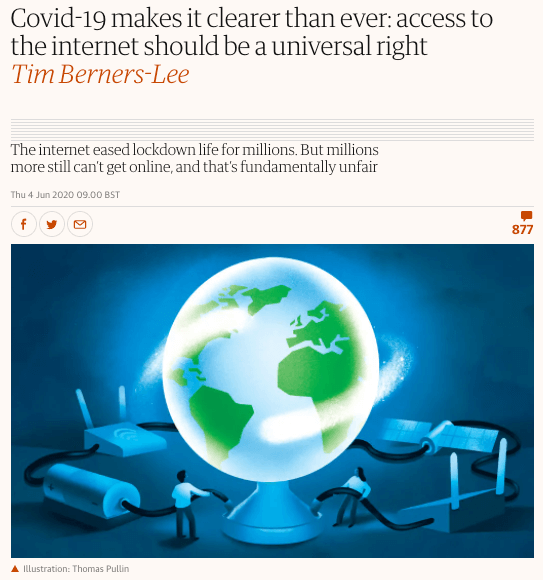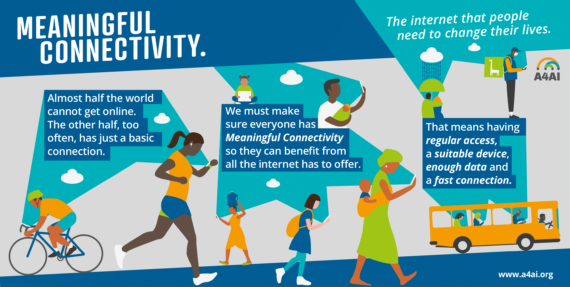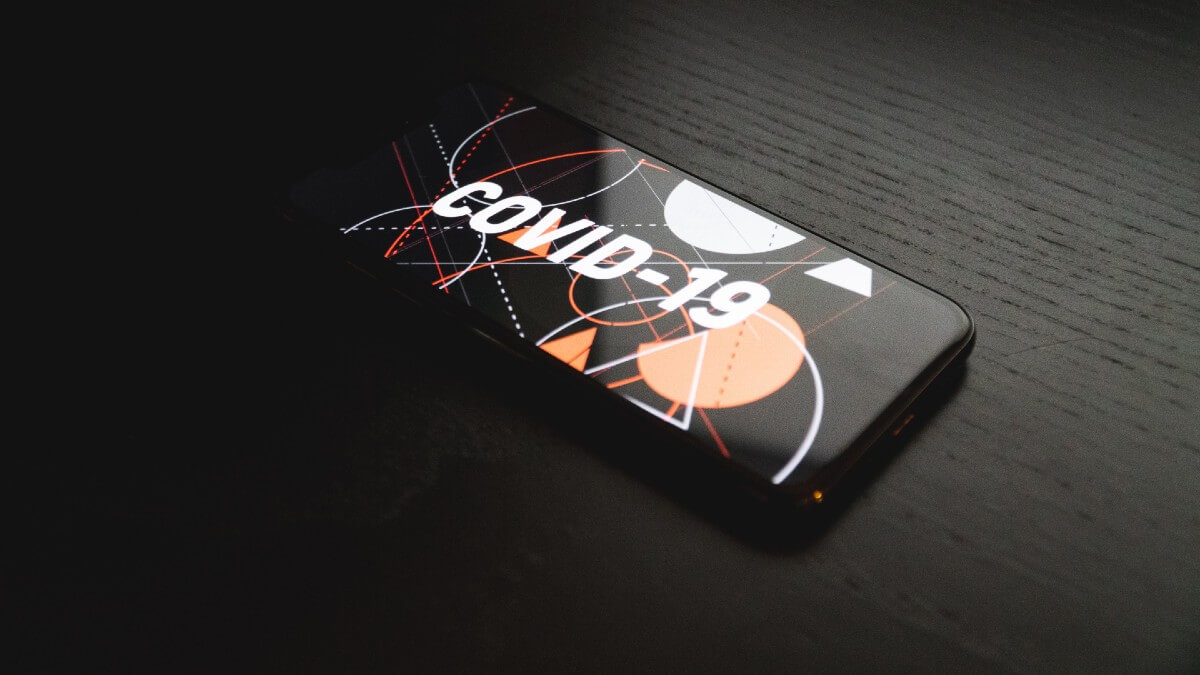
World Wide Web Foundation
2020 Annual Report

In 2020, the web proved to be a lifeline that allowed us to adapt and carry on through the Covid-19 pandemic. But because billions of people still lack even basic internet access, many around the world could not turn to the web when they needed it most. This has to change. People’s need for connectivity will continue to grow, even when this crisis is brought under control. The future is digital and the web must be truly world wide.
That’s why the Web Foundation, led by Sir Tim Berners-Lee’s original vision of a web for everyone, is working for a safe, empowering web as a basic human right. As we look to rebuild our world from this crisis, this work has never been more important.
Tom Jenkins
Chair of the Board of Trustees
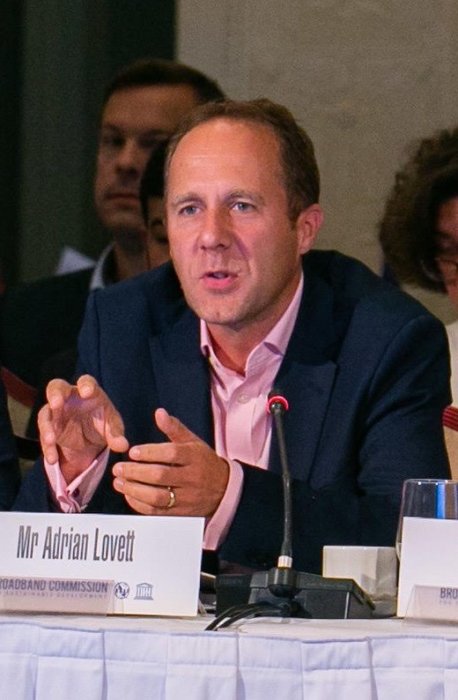
While the Covid-19 crisis has affected all our lives, many deep inequities mean its impact has been far from evenly distributed. We’ve seen how those without the essential resources needed to face the pandemic — from job security and housing, to health provision and vaccine distribution — have been hit disproportionately hard. Access to the web sits alongside these as an essential lifeline. As the world builds back from this crisis, we must work to overcome the inequalities that have exacerbated this global tragedy. That includes ensuring that everyone has the digital tools they need to survive and thrive in good times and bad.
That’s why at the Web Foundation we’re working for digital equality. That means fighting for meaningful connectivity for everyone, putting women front and centre of tech policy to tackle gender inequalities, and championing human rights in the digital sphere through the Contract for the Web — all critical components of our work to deliver a safe and empowering web to everyone. This is one of the most important causes of our time and, working with our founders, Sir Tim Berners-Lee and Rosemary Leith, our Board members, partners, and allies, we can build a better, fairer digital future. We hope you’ll join us.
Adrian Lovett
President & CEO
Our Impact in 2020
1. We put forward a plan to make sure the web helps more in the fight against Covid-19
In the early weeks of the pandemic, we saw the web at its best: enhancing lives, acting as a vital public good, and connecting people in creative, positive ways. But it was clear it could do so much more. So when the world shut down and went online, we got to work developing policy proposals to help leaders make sure the web works for everyone in this crisis. Our briefs recognised the web’s vital role as both a lifeline and a critical force in helping to curb the spread of the virus and focused on three key areas: securing internet access for everyone, fighting health misinformation, and unlocking data to protect public health while safeguarding privacy.
This work helped put web access on the agenda of business leaders and policymakers and drove public debate at a vital moment. The UK’s Guardian published an editorial on the global repercussions of the digital divide, specifically endorsing our proposals and echoing our message that the internet is not a luxury but a lifeline.
The goals of increasing access, fighting misinformation, and using data responsibly and effectively — all part of the Contract for the Web — are critical to ensuring the web serves humanity. As we begin to rebuild from this crisis and reimagine our world, we will continue to challenge leaders to recognise the web’s power to catalyse change and help shape the world we want.
2. We championed internet access as a basic human right
As the web proved to be a lifeline — enabling billions of people to remain safe and healthy, continue to work and learn, and stay connected — it was clearer than ever that it needs to be treated as a basic right. Our co-founder and inventor of the web, Sir Tim Berners-Lee, spoke at the United Nations General Assembly and the European Parliament, urging leaders to recognise internet access as a human right, and work to close the digital divide as an international priority.
“Just as the world decided that electricity and water were basic needs that should reach everyone, no matter the cost, we should recognise that now is our moment to fight for the web as a basic right. Let’s be the generation that delivers universal internet access.”
Tim Berners-Lee | The Guardian
This built on our advocacy to bring as many people online as possible during the crisis, with leaders including US Federal Communications Commissioner, Jessica Rosenworcel; UN Special Rapporteur on freedom of opinion & expression, David Kaye; and tech entrepreneur, Martha Lane Fox, amplifying our calls.
Advocacy positions from our Alliance for Affordable Internet (A4AI) and Women’s Rights Online network were incorporated in numerous research products by international organisations, offering best practice to expand connectivity and tackle digital inequalities. Select publications include: USAID’s Barriers to Investing in Last-Mile Connectivity, ITU’s Last-Mile Internet Connectivity Solutions Guide, the UN High Level Panel’s Roadmap for Digital Cooperation, and the World Bank’s World Development Report 2021.
Meanwhile, across the globe, our A4AI partners stepped up to keep people connected to vital health information, online learning, and loved ones. For instance, the World Bank Group’s emergency coronavirus fund gave rapid support to countries to deal with the effects of the pandemic, including making remote learning available for 50 million children in Pakistan. Fiam WiFi — a Nigeria-based ISP that provides affordable services for low-income areas and rural communities — launched social media campaigns to share health information with users of their WiFi hotspots. And the government in Ghana zero-rated websites that promote Covid-19 awareness and safety protocols, and offered additional data packages for access to educational websites and government portals that connect citizens with essential services.
3. We launched a new meaningful connectivity target to unlock the full power of the internet for all
The way internet access is currently measured counts anyone who has used the internet at least once in the past three months as being online. That means even though over half the world’s population is now considered connected, many of these people lack even the basic level of access that would make a real change in their lives, never mind use the internet’s most powerful features such as online learning, video streaming, and telehealth. To better understand how people can actually use the internet and to raise the bar for connectivity, A4AI set a new, more ambitious target for access: meaningful connectivity.
The target sets minimum thresholds across the four dimensions of internet access that matter most to users. We have meaningful connectivity when we can use the internet every day using an appropriate device with enough data and a fast connection:
- Regular internet use | minimum threshold: daily use
- An appropriate device | minimum threshold: access to a smartphone
- Enough data | minimum threshold: anunlimited broadband connection at home or a place of work or study
- A fast connection | minimum threshold: 4G mobile connectivity
Several A4AI partners have adopted this target as a key part of their work, committing to enhancing meaningful connectivity for their member states and stakeholders. Partnerships with UNESCAP and Smart Africa aim to advance meaningful connectivity in Asia Pacific and Africa respectively, while meaningful connectivity was adopted as a pillar of the United Nations High Commissioner for Refugees’ work. Working with A4AI, the governments of the Dominican Republic and Benin have both included meaningful connectivity targets in their national ICT policies.
Researchers are already using the target, including the Inter-American Institute for Cooperation on Agriculture which, in collaboration with the Inter-American Development Bank and Microsoft, used the target in a study that found at least 77 million rural inhabitants in the region cannot access internet services that satisfy minimal quality standards. This will help policymakers understand what action is needed so more people can experience the internet’s full benefits.
4. Through the Alliance for Affordable Internet, we successfully advocated for policies to drive down the cost to connect and expand internet access
Around the world, governments play a key role in prioritising access to meaningful, affordable internet. National broadband plans are one tool governments have to drive effective investment and bring down the cost to connect. Recognising this importance, A4AI led active multi-stakeholder coalitions to advance affordable access through national policy change.
In Nigeria, the Ministry of Communications and Digital Economy formally approved and published the new Nigerian National Broadband Plan 2020-2025. The plan includes recommendations made by A4AI’s Nigeria Coalition in its National Broadband Plan Review, and aims to boost the nation’s digital economy by achieving 70% internet penetration by 2025. If this ambitious target is achieved, over 90 million more people will be online and able to experience the web’s benefits.
In the Dominican Republic, A4AI was a key contributor to the development of the National Broadband Plan’s targets and objectives. Based on this expertise, the government created a special cabinet for digital transformation that will lead, design, and coordinate the implementation of its national digital transformation agenda. A4AI is a member of a committee leading access and connectivity policies and the broadband plan implementation.
5. Our research showed how to make internet access more affordable for everyone
A4AI’s advocacy, research, and technical assistance has brought down the cost to connect for hundreds of millions of people around the world.
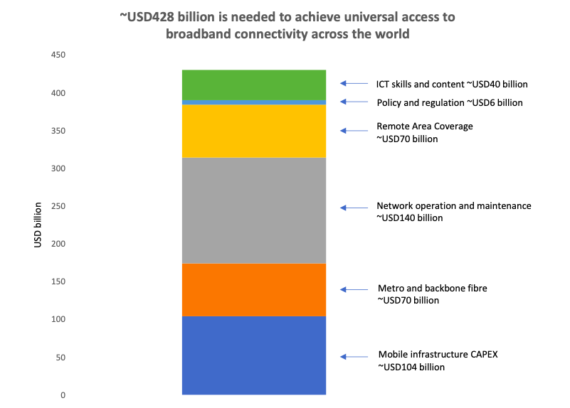
A4AI analysis, in partnership with the ITU, calculated that to achieve universal internet access by 2030, an additional $428 billion of investment is necessary to connect everyone to quality broadband internet in the next ten years. This has become a global advocacy message used by leaders from the ITU, the UN Broadband Commission, the World Bank, and beyond.
A4AI’s Affordability Report urged policymakers to prioritise national broadband plans to drive investment and improve affordability. The report was cited by over 70 media outlets, including Jeune Afrique, BBC Digital Planet, Forbes Brasil, Lusa, and Punch. The report sparked conversations on the importance of expanding access to meaningful, affordable internet among global leaders, including Colombia’s Presidential Advisor of Economics Affairs and Digital Transformation Victor Munoz.
New A4AI research showed that mobile device prices are a huge barrier to internet access. Analysing the cost of mobile devices across 70 low and middle-income countries, we found that 2.5 billion people live in countries where the cost of the cheapest available smartphone is a quarter or more of the average monthly income — the same that the average European spends on housing and utilities. These devices, once seen as consumer luxuries, are today the essential first step to getting online. Reducing their cost is critical to getting the next billion — and the last billion — connected. This research provides the first openly available data on device cost for over 5 billion people and provides a benchmark to measure change.
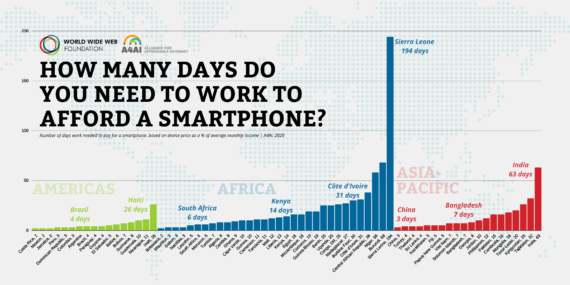
A4AI device pricing data shows smartphones are unaffordable for billions around the world
6. We helped to close the digital gender gap and empower the next generation of tech leaders
This year marked our third phase of support for the Women’s Rights Online Network, a network of women’s rights and digital rights organisations and researchers working across Africa, South East Asia, Latin America, and the Caribbean to bridge the gender gap in technology, data, and policymaking. The network’s research and advocacy over the last five years has connected more women and girls to the internet, driven policy change for women’s rights online, and powered more gender-equitable digital economies and societies.
In 2020 we published the network’s flagship report: Closing the digital gender gap for a more equal world. Based on focus groups, interviews, and surveys in Colombia, Ghana, Indonesia, and Uganda, the report found that while there has been some progress towards closing the gap in basic access, women still face a multitude of additional barriers to using the internet and fully participating online. These include a lack of trust in privacy and security, barriers to digital skills, and significant gender gaps in meaningful internet connectivity.
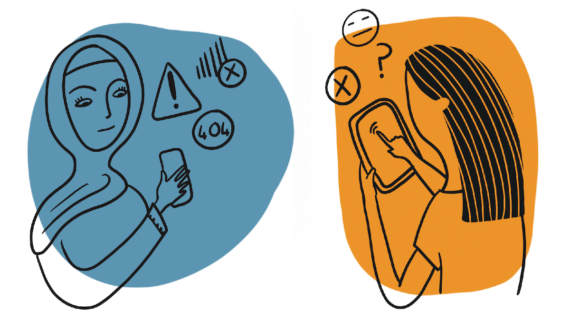
With our partners, we launched Gender Scorecards in three additional countries, Guatemala, Bangladesh, and Namibia, providing much-needed data on the digital gender gap. This research has now been carried out in 22 countries, helping to illuminate the issue and inform policies. To achieve Sustainable Development Goal 5b, we need more research to better understand the causes of the digital gender divide and take urgent action to close it.
WRO partners use the network’s research to advocate for change. In Peru, Hiperderecho used the country’s Gender Scorecard to develop and deliver training for journalists to create awareness about the gender digital gap. WOUGNET in Uganda held consultations to develop civil society policy positions around gender equality online and is engaging policymakers to adopt these recommendations. And Sula Batsu was selected to help develop Costa Rican national policy on gender, science, and technology following its advocacy work in the digital industry in Central America. This was informed by our Gender Gap Audit Toolkit.
In 2020, we also supported grassroots women’s digital skills initiatives around the world through the Digital Skills Fund — a partnership between the Web Foundation, the EQUALS Global Partnership, and Germany’s Federal Ministry for Economic Cooperation and Development. In its second year, the fund supports a range of projects that provide gender-sensitive skills training to women and girls across communities in Africa, Asia, and Latin America. This includes supporting projects like Apps and Girls which is creating coding clubs in public secondary schools in Tanzania and Uganda, and Douar Tech which helps young women in rural areas to gain entrepreneurship skills and access digital employment opportunities.
7. We called for a web that works for women and girls on its 31st birthday
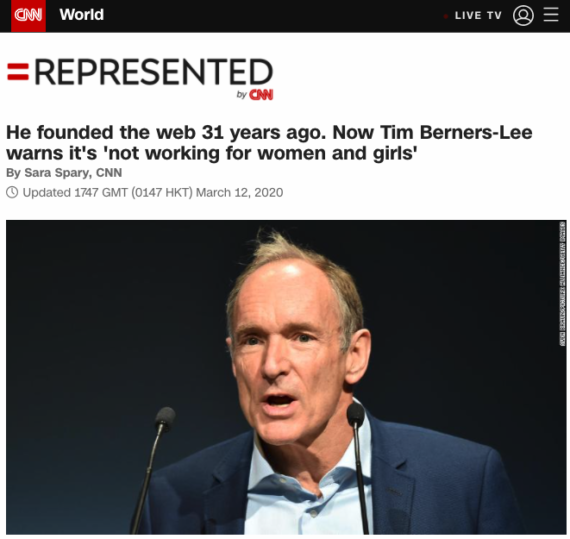
As the World Wide Web turned 31, Sir Tim Berners-Lee issued a warning that the web is not working for women and girls and outlined challenges we must tackle in order to deliver a web for everyone. His annual letter highlighted a growing crisis of abuse and harassment against women and girls online and pointed to research conducted in collaboration with the World Association of Girl Guides and Girl Scouts that found over half of young women surveyed have experienced violence online.
Building on the work of many experts and activists calling for action on this issue, he outlined five priorities to tackle the digital gender divide and online abuse that prevents women and girls from using the web fully and freely.
Cutting through a news cycle dominated by the emerging Covid-19 pandemic, the letter was reported in over 1,000 news stories across 55 countries, including in print in the Guardian, the Times, and USA Today and online at CNN, Reuters, Sky News, ITV News, The Independent, South Africa Broadcasting Corporation, Die Welt, Irish Independent, Evening Standard, CNET, RTL and Republica and many others. A range of voices were featured alongside Sir Tim’s, including the World Association of Girl Guides and Girl Scouts, the Molly Russell Foundation, and our Women’s Rights Online partners.
8. We convened experts to tackle online abuse against women and girls
Sir Tim’s letter kicked off a series of multi-stakeholder consultations that brought together over 120 participants from tech companies, civil society, and governments in 35+ countries to share their expertise and experiences and create solutions to online gender-based violence. The consultations centered on the experiences of diverse groups of activists, politicians and journalists, and young women and girls that have faced online abuse.
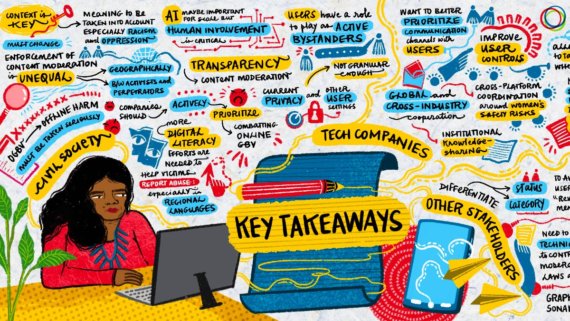
This rare cross-sector collaboration on the issue generated evidence to inform the co-creation of solutions to tackle the abuse of women on tech platforms, ultimately focusing on improving reporting systems and creating better tools for users to curate their online safety. These consultations laid the groundwork for policy design workshops, prototype development, and the announcement of unprecedented tech company commitments at the Generation Equality Forum in Paris in 2021.
“My reputation as a credible journalist was being put on the line – the harassers were questioning and discrediting my reporting by spreading false information.”
Arzu Geybulla, Journalist in Azerbaijan
9. We launched the roadmap for the Contract for the Web
The Contract for the Web is the first-ever global plan of action to make our online world safe and empowering for everyone, everywhere. This year, with the backing of over 1,400 endorsing organisations, we built the roadmap to turn the Contract from words to action. Focusing on accountability, best practices, and policy design, the next steps will drive sustained, coordinated action so that everyone, everywhere can connect, and so that we have the human-centered web we need.
In November, we marked the first anniversary of the Contract by gathering our community to celebrate what we’ve achieved together so far and to look ahead. Across the globe, organisations that have endorsed the Contract are working on a broad range of initiatives to build a better web, from Access Now’s #KeepItOn campaign to IRIS’ work to enhance women’s participation in internet governance.
In 2021, the Contract for the Web will be at the heart of our work as we launch the Tech Policy Design Lab to bring together experts from across sectors and countries to collaboratively tackle the most pressing technology challenges of our time.
10. We helped shape the global debate on our digital future
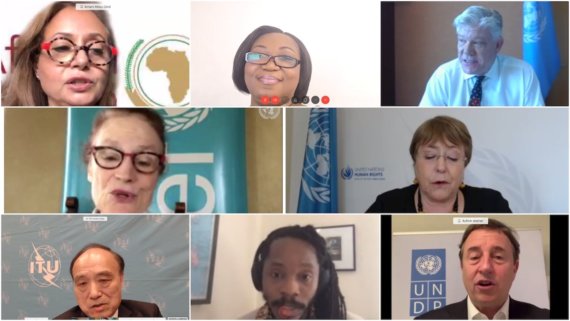
Throughout 2020 we continued to play a leading role on the global policy stage shaping debates on our digital future. We were a lead non-state actor involved in the United Nations’ Digital Cooperation Agenda.
We convened a coalition of global policy leaders and organisations calling on the new President of the UN General Assembly to make digital trust and security a priority for his presidency. Playing a role as a technical partner in working groups, working closely with the Executive Office of the Secretary General and the Office of the UN Tech Envoy, and speaking at key UN events, we amplified the ideals of the Contract for the Web as we advocated for a safe and empowering digital world for everyone. We offered a platform for global civil society players to engage with the office of the UN Tech Envoy and succeeded in brokering a safe environment for collaboration, especially with organisations from the global south.
Organisational Development
In 2020, we focused on building our team.
Mark Davies joined the team as Director of Communications in March to lead a team executing creative and compelling communications to raise awareness of our issues with a broader audience.
Dr. Catherine Adeya came on board as Director of Research in August to lead and coordinate a research team dedicated to interrogating and understanding the most important barriers to achieving our vision of the web we want.
Erica Mesker was hired as Director of Development in October to lead our fundraising efforts and design and deliver a fundraising strategy to secure and strengthen our long-term financial future as we fight for a safe and empowering web for everyone over the coming years.
Financials and How to Give
Full details of Web Foundation finances are available in our audited financial statements, along with past financial statements and a current list of funders.
In the last 12 months, the web — like so many of us — has been tested like never before. It has proven to be a lifeline that allows us to adapt and carry on. But for many across the globe, the web remains out of reach. We must work to extend this lifeline to the billions of people who go without — and that comes at a cost.
The Web Foundation relies on donations to fund our fight for a web that serves humanity. Please consider donating to help us make sure the future of the web benefits everyone.
We are deeply grateful to the individuals, foundations, governments, and companies whose support allows us to fulfill our mission and maintain fiscal responsibility. A special thank you to all those who supported our work in 2020.
